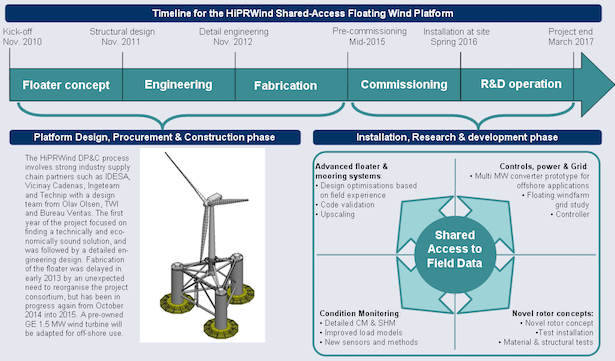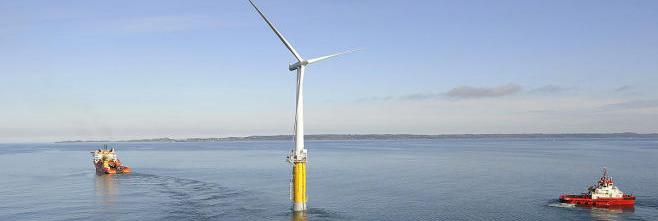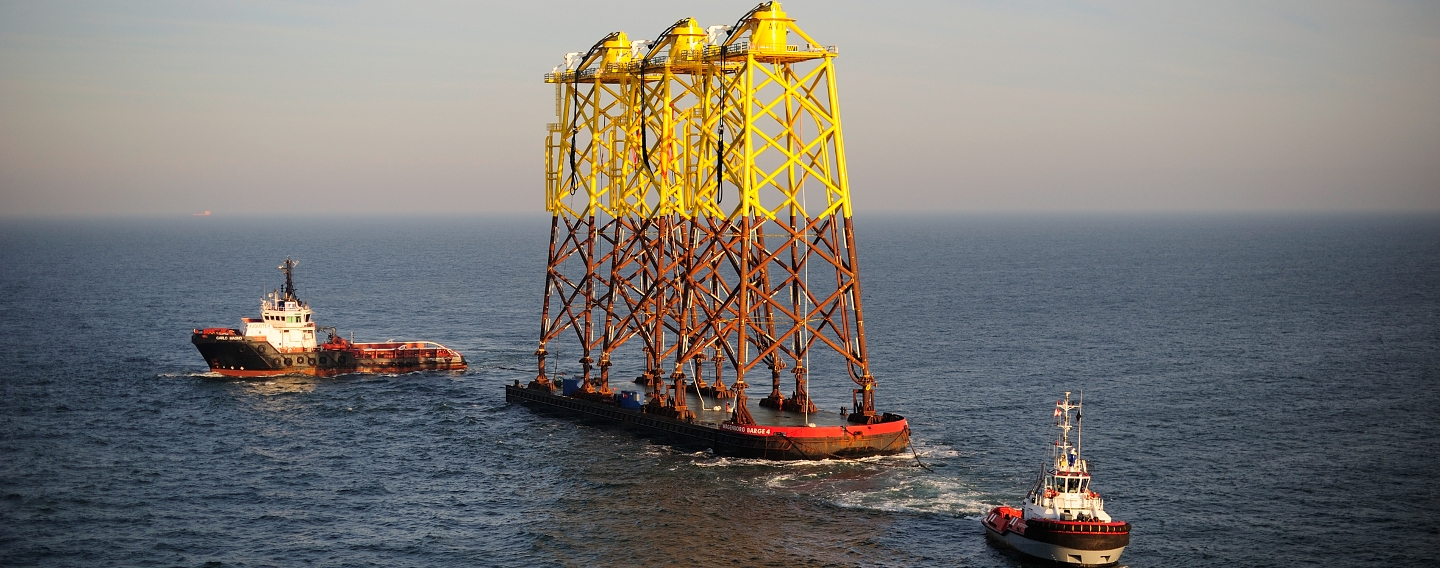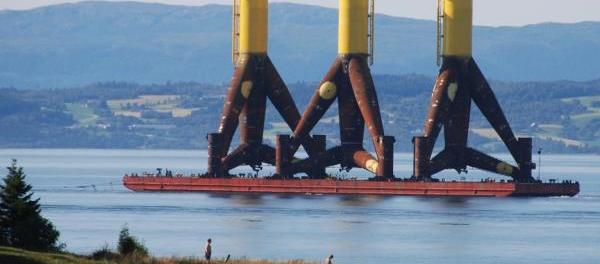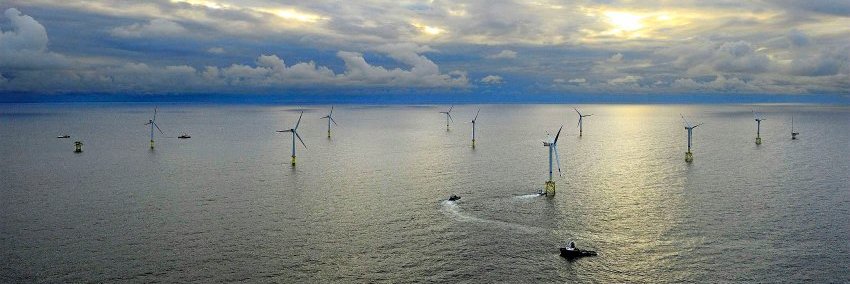The HiPRWind project consists of ten Work Packages (WP’s), which are modular but at the same time tightly integrated. The work is run in an industrial manner, while respecting the long-term R&D nature of many of the challenges and the overriding objective of shared access to full scale data.
WP1 addresses the design of the floating platform and its moorings system, whereas WP2 is focused on the actual construction, its assembly at port facilities and installation at the selected offshore test site. WP 3 covers the coordination and operation of the platform-related research. Within WP 4 to 7, critical aspects of the floating wind turbine are investigated, such as the structure and its system dynamics, the controller, condition and structural health monitoring systems, and the rotor. High reliability power electronics will be designed, assembled and tested in the lab at a multi-MW scale. The R&D results all feed into WP8 which is dedicated to identifying and refining new concepts for very large offshore wind turbines. The project has dedicated WPs for dissemination and IPR exploitation, notably addressing also non-specialist and non-technical target groups, and for project management drawing on both research and industry consortium members.
The graphic below illustrates the interaction between the Design, procurement and construction (DPC) phase and the ensuing installation and R&D, emphasising those tasks depending most directly on the test floater.
